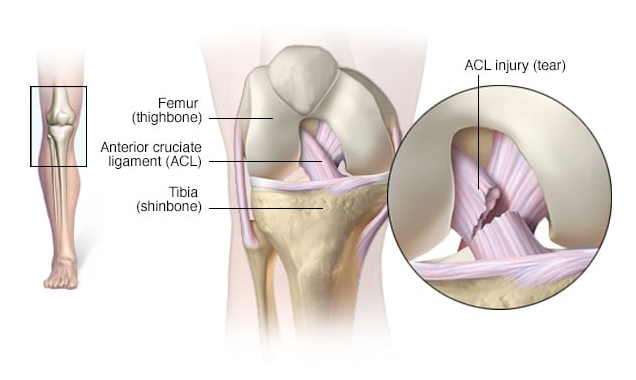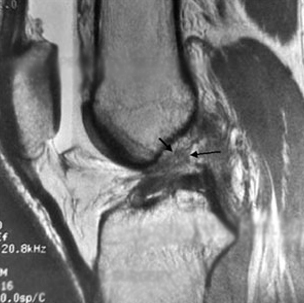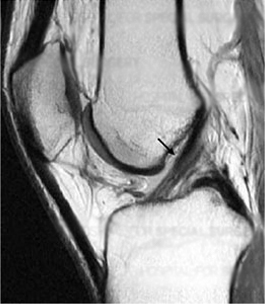| Category | ACL Reconstruction |
ACL reconstruction is surgery to replace a torn anterior cruciate ligament (ACL) a major ligament in your knee. ACL injuries most commonly occur during sports that involve sudden stops and changes in direction such as soccer, football, basketball, and volleyball.
Ligaments are strong bands of tissue that attach one bone to another bone. During ACL reconstruction, the torn ligament is removed and replaced with a band of tissue that usually connects muscle to bone (tendon). The graft tendon is taken from another part of your knee or ankle.

The ACL is one of two ligaments that cross the middle of the knee — connects your thighbone to your shinbone and help stabilize your knee joint.
Most ACL injuries happen during sports and fitness activities that can put stress on the knee:
A course of physical therapy may successfully treat an ACL injury for people who are relatively inactive, engage in moderate exercise and recreational activities, or play sports that put less stress on the knees.
ACL reconstruction is generally recommended if:
People who have had an ACL injury are more likely to develop osteoarthritis in the knee earlier in life than those who do not
How do you know if you need ACL surgery?
The need for surgery depends on the severity of the ACL tear and the lifestyle of the patient. A completely torn ACL cannot heal on its own. Studies have shown, however, that in some patients who experience a partial tear of the ACL, the ligament may heal without the need for surgery.
What are Partial and complete ACL tears?
To determine whether a tear is partial or complete, the doctor will perform two manual tests:
In patients who have only a partial tear, it may be recommended to delay surgery and first see if the ligament heals without it.
How soon should you get ACL surgery?
Orthopedic surgeons gauge the appropriate timing of reconstruction surgery based on:
How you prepare
The goal before surgery is to reduce pain and swelling, restore your knee's full range of motion, and strengthen muscles.
What you can expect
Spinal anesthesia is typically used during ACL reconstruction. ACL reconstruction is usually done through small incisions — one to hold a thin, tube-like video camera and others to allow surgical instruments access to the joint space
During the procedure
Your damaged ligament is removed and replaced with a segment of the tendon. This replacement tissue is called a graft and it comes from another part of your knee or ankle’
Tunnels are drilled into the thighbone and shinbone to position the graft accurately and secured to bones with screws or other devices. The graft will serve as scaffolding on which new ligament tissue can grow.
After the procedure
After recovering from the anesthesia, you can go home the next day. and you will be asked to wear a knee brace or splint to help protect the graft.
In general, it's essential to keep your leg elevated, apply a cold wrap or ice to your knee, and rest as much as possible.
Following the rehabilitation plan is important for proper healing and achieving the best possible outcomes. Patients are able to walk with crutches and a leg brace on the day of surgery. Very soon after surgery, the patient enters a rehabilitation program to restore strength, stability, and range of motion to the knee. The rehabilitation process is composed of a progression of exercises:
The degree of pain associated with ACL recovery varies and can be addressed successfully with medication. Recovery time also varies from patient to patient. The determination of when a patient has fully recovered is based on restoring muscle strength, range of motion, and proprioception of the knee joint.
Arthroscopic surgical techniques have made recovery times quicker and easier in comparison to open surgery, which is how ACL reconstruction was performed in the past. But to achieve a successful outcome, it is critical that the patient has a rehabilitation period that is carefully supervised by an appropriate physical therapist and surgeon
Results
Successful ACL reconstruction paired with focused rehabilitation can usually restore stability and function to your knee. Within the first few weeks after surgery, one should strive to regain a range of motion equal to that of the opposite knee. Full recovery generally takes about 6months. It may take around 6 months before athletes can return to their sports.
Side-view MRI showing a completely torn ACL


ACL reconstruction surgery steps
Reconstruction of the ACL follows a number of basic steps, although they may vary slightly from case to case:
Can a teenager have ACL surgery?
The standard method of ACL reconstruction can be performed successfully on older teenagers.
But performing ACL reconstruction on a growing child is difficult because the typical method used for adults can cause damage to open growth plates, which can lead to uneven limb lengths or deformities.
All-Inside, All-Epiphyseal Reconstruction (AE). The technique is similar to adult ACL surgery but uses new technology and intraoperative X-rays to place the new ACL graft anatomically in the knee, without the graft crossing the adjacent growth plates.
It is performed arthroscopically and results in a near anatomic ACL reconstruction with a very high rate of return to play. This can be welcome news to child athletes who, without surgery, would simply have to stop playing sports until they had finished growing.